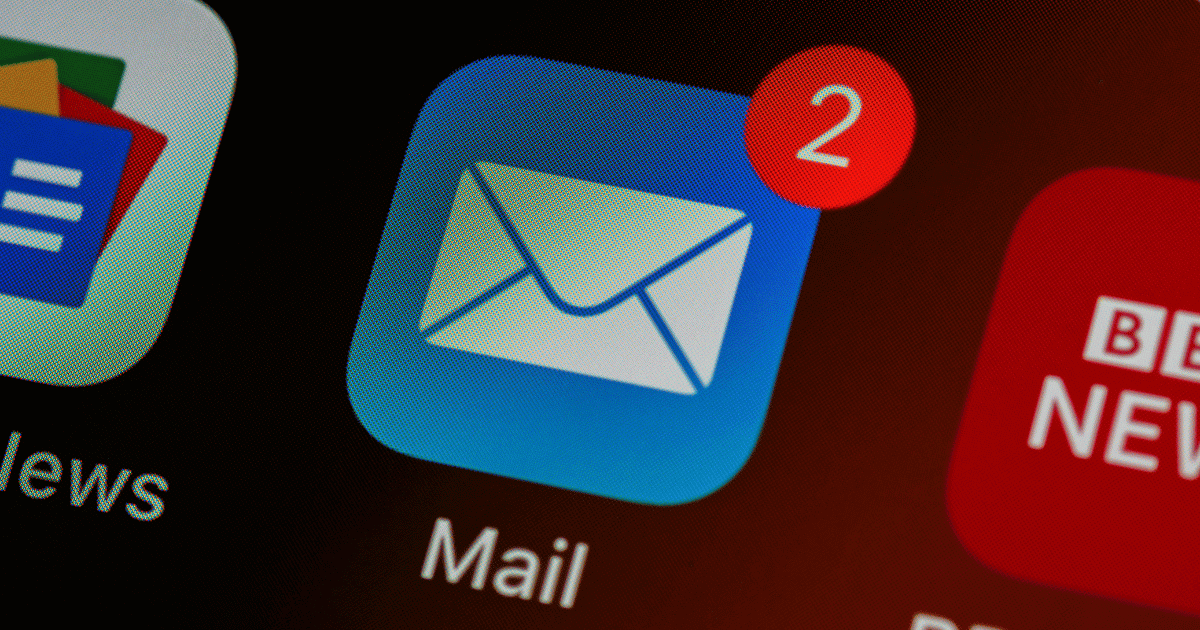As markets grow ever more saturated, marketing your product effectively is more crucial – and challenging – than ever before.
With the myriad platforms, tools, and channels available, it's easy to feel overwhelmed. How do you cut through the noise and get your product into the hands of your target audience?
We've got you covered with a curated list of the 24 channels that provide the most bang for your marketing buck.
From social media juggernauts to overlooked gems, we explore a variety of platforms tailored to diverse marketing needs. But that's not all – we also sprinkle in some bonus tips to help you optimize your strategy, making this your go-to resource for effective product marketing this year.
Let’s dive in!
Why do marketing channels matter?
For any business looking to grow its customer base, increase sales, and build brand awareness, choosing the right marketing channels is crucial.
They are the conduits through which your product moves from concept to consumer, allowing you to engage with potential customers at various touch points along their buyer's journey.
Selecting the right channels isn't just about visibility; it's about finding the most efficient and effective ways to convert interested parties into loyal customers. Moreover, different channels serve different purposes – some are great for customer acquisition, while others excel at retention.
Failing to optimize these avenues (or neglecting them entirely) can result in missed opportunities and wasted resources. Therefore, understanding and leveraging the right marketing channels for your product is essential for achieving your business goals.
So, without further ado, let’s explore the 24 game-changing channels for businesses aiming to boost their products’ visibility and reach a wider audience.

Channel #1: Social media
Social media has revolutionized the way businesses connect with their target audience. It's not just about posting cute cat videos or sharing vacation photos anymore; it's a dynamic marketing tool that can strategically drive significant results.
In 2021, the average person spent approximately 2 hours and 25 minutes per day on social media, highlighting the immense opportunity for businesses to connect with their audience and capture their attention.
With billions of users on platforms like Facebook, Instagram, X, TikTok, and LinkedIn, social media offers vast reach, direct engagement with your audience, and sophisticated targeting options.
To make the most of this channel, maintain consistent branding, create varied and engaging content tailored to each platform, consider paid advertising, and regularly analyze your social media performance so you can make data-driven adjustments.
Channel #2: Websites and blogs
Your website is your digital storefront, often the first place potential customers visit to learn about your products and services. Incorporating a blog into your website is a powerful way to attract and engage your audience.
High-quality blog content helps establish your brand as an authority in your niche, boosts search engine rankings for organic traffic, and aids in lead generation through forms and calls-to-action.
To excel in this channel, focus on search engine optimization (SEO), prioritize quality over quantity in your blog content, and ensure a seamless user experience.
Channel #3: Email marketing
Email marketing remains a potent channel for nurturing leads, engaging customers, and driving sales. In 2023, personalization and value delivery are key.
Direct communication via email allows you to reach your audience in their inboxes, a place they check regularly. Effective segmentation and automation enable highly targeted campaigns and personalized messaging at scale.
To succeed in email marketing, address subscribers by name, experiment with A/B testing for subject lines and calls-to-action, and diversify content beyond promotions to include educational content, industry insights, and company updates.

Channel #4: Videos
As attention spans grow ever shorter, exploring more engaging ways to enhance your product’s visibility is crucial. That’s where video marketing comes in. It’s a great way to captivate your audience, convey complex information effectively, and drive engagement across a range of platforms.
To excel in video marketing, prioritize content quality, optimize for mobile viewing, focus on storytelling, and consider leveraging live streaming for real-time engagement. The power of visual storytelling has never been more apparent, and video content captures attention like no other medium.
Channel #5: Influencers
Collaborating with influencers is a powerful strategy in 2023. Influencer marketing leverages the credibility and reach of individuals with substantial followings on social media and other platforms. It can help your product gain trust and visibility among the influencer’s devoted followers.
To succeed in influencer marketing, choose influencers whose audience aligns with your product's target demographic, ensure partnership transparency, build long-term relationships, and consider working with micro-influencers for niche engagement.
Channel #6: Digital signage
In recent years, digital signage has emerged as an invaluable tool, offering distinctive opportunities to captivate your audience, convey intricate information, and drive engagement in physical and digital spaces.
Digital signage involves dynamic electronic displays communicating information, promotions, or branding messages. It can be deployed in all kinds of environments from retail stores to corporate offices and public spaces. It can even be integrated into virtual events.
One of the key advantages of digital signage lies in its capacity to seize attention through eye-catching visuals. These displays allow you to showcase vibrant images and videos, creating a compelling medium for conveying your message effectively.
Moreover, the flexibility of digital signage cannot be understated. It permits real-time updates, ensuring your audience receives the latest information promptly. This adaptability is invaluable, especially when content needs to be adjusted swiftly to address evolving circumstances.
Channel #7: Search engine optimization (SEO)
In the digital age, SEO is fundamental to marketing success. It's about optimizing your online content to improve its visibility in search engine results, driving organic traffic to your website, enhancing credibility, and providing a cost-effective way to reach potential customers.
To excel in SEO, perform keyword research, create high-quality content, ensure mobile optimization, and build a network of quality backlinks.

Channel #8: Podcasts
Podcast content is a rising star in the media landscape. It provides a unique opportunity to engage with an audience actively seeking informative and entertaining audio experiences.
Podcast listeners are known for their high levels of engagement and loyalty, making podcasts an ideal channel for building a dedicated following of listeners eager to tune in to your content regularly.
To thrive in the podcasting world, it's important to experiment with different podcast formats, maintain a consistent publishing schedule, collaborate with relevant guests, and cross-promote your podcast across various platforms.
Channel #9: Word of mouth
Harnessing the power of satisfied customers is a timeless strategy, as recommendations from friends, family, or peers remain a potent means of acquiring new customers and building a community around your product.
Word-of-mouth marketing facilitates and encourages customer advocacy through exceptional service, referral programs, online reviews, and user-generated content.
To excel in word-of-mouth marketing, go above and beyond to exceed customer expectations, incentivize referrals with rewards or discounts for both the referrer and the new customer, encourage customers to leave reviews on platforms like G2, Trustpilot, or Yelp, and showcase user-generated content, such as testimonials and photos, on your website and social media.
Channel #10: Content syndication
Content syndication involves republishing your content on third-party websites or platforms to reach a broader audience. It's an effective way to extend the reach of your content and establish your brand as an authoritative source in your industry. Syndicating your content on reputable platforms can help you tap into new audiences and drive traffic to your website.
To excel in content syndication, choose platforms that align with your target audience, ensure proper attribution to your original content, and monitor performance metrics to gauge its effectiveness.
Channel #11: Affiliate marketing
Affiliate marketing is a performance-based strategy where you reward affiliates for driving traffic or sales to your website. Affiliates, often bloggers or influencers, promote your products or services and earn a commission for each successful referral. It's a cost-effective way to expand your reach, as you only pay for conversions.
To succeed in affiliate marketing, build strong relationships with affiliates, offer competitive commission rates, provide them with the necessary resources and support, and track affiliate performance closely.

Channel #12: Smartphones
Mobile marketing is all about reaching your audience on their smartphones and other mobile devices. With the increasing use of mobile technology, this channel is more critical than ever. Mobile marketing includes tactics like SMS marketing, mobile apps, and location-based marketing.
To make your mobile marketing a triumph, optimize your website for mobile devices, create mobile-friendly content and ads, and use geo-targeting to reach users based on location.
Channel #13: Events
Events marketing involves promoting your products or services through participating in or hosting online and offline events. Events can range from webinars and virtual conferences to trade shows and in-person seminars. They offer a unique opportunity to connect personally and interactively with your audience.
For effective event marketing, make sure you engage with attendees before, during, and after the event, and provide valuable content or experiences to your audience.
Channel #14: Guerilla marketing
Guerrilla marketing is a highly unconventional and attention-grabbing marketing channel. It involves using creative and often unexpected tactics to promote a product, service, or brand. Guerrilla marketing campaigns typically rely on low budgets but have high impact.
Examples of guerrilla marketing include flash mobs, graffiti advertising, public stunts, and other out-of-the-box strategies that capture the audience's attention and generate buzz. The goal is to create a memorable and shareable experience that resonates with the target audience.
Channel #15: Dark social marketing
Dark social marketing is a unique and mysterious channel in digital marketing. It involves sharing content through private or untraceable channels, such as private messaging apps, email, or direct social media messages, where traditional tracking methods are limited.
To leverage dark social marketing effectively, you can create shareable content encouraging users to share it privately with friends and contacts. This can include exclusive offers, personalized recommendations, or interactive content that sparks discussions.
The challenge with dark social marketing is that it's tricky to measure accurately, as it operates outside the usual analytics tools. However, it's estimated that a significant portion of content sharing happens this way. Harnessing dark social can help your brand tap into word-of-mouth marketing and reach a more engaged and influential audience.

Channel #16: Ephemeral content
Ephemeral content marketing capitalizes on the fleeting nature of posts shared on certain social platforms. It involves creating short-lived content that disappears after a certain period, such as stories on Instagram, Snapchat, and Facebook.
To succeed in ephemeral content marketing, you must craft engaging, time-sensitive content that encourages immediate interaction and FOMO (fear of missing out) among your audience. This can include behind-the-scenes glimpses, limited-time offers, or exclusive sneak peeks.
Ephemeral content is effective because it taps into the urgency and desire for real-time engagement, prompting users to check your content regularly.
Channel #17: Chatbots
Chatbots are increasingly used in marketing to automate customer interactions, provide instant support, and gather valuable data. Chatbots can handle inquiries, guide users through the sales funnel, and deliver personalized recommendations.
To turbocharge your AI-powered marketing, implement chatbots for seamless customer service, use AI to analyze customer data and generate insights, and leverage machine learning to enhance personalization.
Channel #18: eCommerce advertising
eCommerce advertising is an integral facet of eCommerce marketing and a vital tool in many B2C product marketers’ toolboxes. Through mediums such as display ads, banner ads, and rich media ads, it amplifies your ability to engage your desired audience, resulting in increased conversions and heightened brand recognition.
As more consumers embrace online shopping's convenience, the value of e-commerce businesses has skyrocketed, solidifying their pivotal role in the modern digital domain and underscoring the transformative impact of e-commerce advertising.
Channel #19: Visual search
Visual search allows users to search for products or information using images rather than text. Platforms like Pinterest and Google Lens have popularized this technology. Users can take a picture of an item or use an existing image to find similar products or information.
To make visual search work for you, optimize your product images for search engines, use descriptive image captions and alt text, and ensure your website is mobile-friendly to accommodate visual search users.

Channel #20: Virtual and augmented reality (VR/AR)
Virtual and augmented reality are immersive technologies that are gaining traction in marketing. VR creates entirely virtual environments, while AR overlays digital information into the real world. These technologies can be used for product demonstrations, interactive experiences, and virtual showrooms.
To excel in VR/AR marketing, explore creative ways to integrate these technologies into your campaigns, provide valuable and memorable experiences, and ensure accessibility for users.
Channel #21: Voice search optimization
With the growing popularity of voice-activated devices and virtual assistants like Siri, Alexa, and Google Assistant, optimizing your content for voice search is becoming crucial.
Voice search optimization involves tailoring your content to match the way people speak their queries. To excel in voice search optimization, focus on natural language, provide concise and informative answers, and ensure your website loads quickly on mobile devices.
Channel #22: Sampling
Experiential sampling campaigns involve creating real-world experiences around your product or service to give potential customers a firsthand taste of your offer. This can include setting up pop-up shops, hosting product trials, or creating immersive event activations.
By giving people a memorable way to interact with your offering, you can leave a lasting impression and build a dedicated customer base.
For an impactful sampling campaign, design creative and engaging experiences that align with your brand identity and target audience. These campaigns can be particularly effective for product launches and brand awareness.
Channel #23: Online games
In-game advertising is a unique channel that involves placing advertisements within video games. This can be billboards, sponsored items, or even interactive elements within the game environment. It’s an innovative way to reach tech-savvy audiences and can be especially effective in the esports and mobile gaming sectors. With the rising popularity of gaming, this channel offers a captive and engaged audience.
To harness this channel effectively, choose games that appeal to your target demographic, create non-disruptive ads, and measure performance through metrics like impressions and click-through rates.
Channel #24: Native advertising
Native advertising involves creating content that seamlessly blends into the format and style of the platform it appears on. It's less intrusive than traditional advertising and can generate higher engagement rates. Native ads can appear as sponsored articles, promoted social media posts, or recommended content.
To drive success in native advertising, create content that adds value to the user experience, clearly label native ads as sponsored, and target your content to the platform's audience.
Conclusion
Marketing in 2023 requires a multifaceted approach. Happily, each channel, from social media to native advertising, offers unique potential to expand reach, engage audiences, and drive results.
For maximum impact, it’s crucial to choose the channels that best align with your audience’s preferences and adapt your strategies accordingly. That way, you’ll not only connect with customers but maintain a prominent position within your market landscape.


 Follow us on LinkedIn
Follow us on LinkedIn



.svg?v=9e53566ba3)